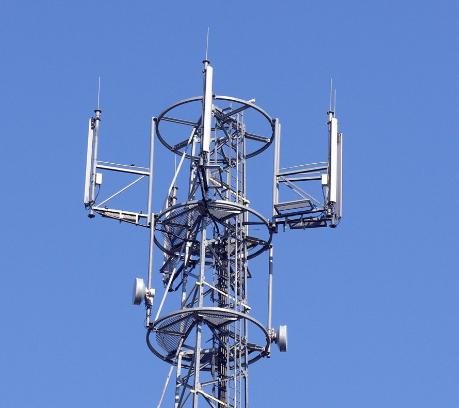Wireless communication frequency spectrum is the invisible infrastructure that powers modern connectivity. It refers to the range of radio frequencies used to transmit information wirelessly, from your smartphone's connection to a cellular network to your office WiFi.
As our world becomes increasingly dependent on instant and reliable communication, spectrum has become the core of the digital economy.
This article explains what frequency spectrum is, how it works, and, most importantly, why strategic management of these resources is critical for your enterprise's operational performance and future growth.


Basic of Communication Frequency Spectrum
1. Frequency Bands and Their Uses
The radio communication frequency spectrum is divided into different frequency bands, each with distinct characteristics:
(1) Low-Frequency Bands (e.g., <1 GHz)
These signals travel long distances and penetrate buildings effectively, presenting wide-area coverage. This makes them ideal for widespread cellular services (like 4G/LTE and 5G coverage layers) and IoT applications. However, they have limited capacity for high-speed data.
(2) Mid-Frequency Bands (e.g., 1-6 GHz)
Often termed the “sweet spot” or “capacity layer”, these bands balance coverage and capacity. They serve as the workhorse for mainstream 5G deployments, delivering high-speed data and low latency for urban and suburban areas.
(3) High-Frequency Bands (e.g., >24 GHz, Millimeter Wave)
These bands offer massive bandwidth, enabling ultra-high speeds and extremely low latency. However, their signals have a very short range and are easily blocked by walls and even rain. They are best suited for high-density areas like stadiums, fixed wireless access, and specialized enterprise campus networks.
2. The Value and Scarcity of Spectrum
(1) Non-Renewable Nature: The communication frequency spectrum is a finite natural resource. It cannot be manufactured like fiber optic cables; therefore, the amount of usable radio frequency space is inherently limited.
(2) Golden Bands: Not all spectrum is created equal. Golden bands, typically in the mid-frequency range, are prized for their ideal compromise between capacity and coverage. Licenses for these bands are sold for billions of dollars in global auctions, highlighting their immense economic value.
(3) Global Regulation and Allocation: To prevent chaos, spectrum use is strictly regulated. International bodies like the ITU (International Telecommunication Union) and national regulators (such as the FCC in the US) allocate specific bands for specific uses (cellular, broadcasting, aviation, military) to ensure services do not interfere with one another.
Why Spectrum Matters for Your Business
The choice and management of communication frequency spectrum directly impact your business's capabilities and resilience.
1. Performance and Reliability
The spectrum band your devices and networks operate on dictates performance.
(1) Low-band spectrum, while wide-reaching, is often congested and can lead to sluggish speeds and unstable connections during peak usage, hampering daily operations.
(2) Access to mid-band or high-band spectrum ensures high-throughput, low-latency connectivity, which is essential for real-time applications like video conferencing, cloud-based ERP systems, and industrial automation.
2. Security and Interference Resistance
Unlike unlicensed spectrum (like public WiFi), which anyone can use and is prone to interference and eavesdropping, licensed spectrum supplies a secure, private highway for your data. This guarantees a controlled environment, enhancing data security and network reliability.
3. Strategic Investment and Future Growth
(1) For Mobile Network Operators (MNOs), acquiring the right spectrum portfolio is the bedrock for building next-generation networks.
(2) For enterprises, partnering with such operators and deploying equipment that leverages a diverse range of spectrum bands future-proofs your operations. It positions your business to seamlessly adopt transformative technologies like massive IoT, Ultra-Reliable Low-Latency Communication (URLLC) for smart factories, and immersive augmented reality, maintaining a sustainable competitive edge.


Tongyu Communication Solutions
To harness the full potential of diverse spectrum bands, an advanced radio communication system is indispensable. At the heart of any such system are the antennas. Tongyu develops a comprehensive portfolio of cutting-edge antenna solutions tailored to maximize the value of your spectrum investment.
1. MacroWiFi
(1) Engineered with a high-gain dual-beam antenna array, our MacroWiFi solution achieves a remarkable transmission range of up to 1.5-2 km—showcasing 10x the coverage of traditional WiFi.
(2) Its 180° wide-angle coverage ensures stable and reliable connectivity, even in the most challenging outdoor environments.
(3) Capable of supporting over 200 concurrent users, it employs intelligent bandwidth allocation to minimize interference and guarantee a consistent quality of service.
2. Massive MIMO Antennas
(1) Our Massive MIMO antennas feature a revolutionary integrated design that reduces volume by 20%-60% and significantly cuts weight for easier deployment.
(2) Equipped with high-performance AFU modules, they ensure exceptional consistency and stability for precise signal processing.
(3) By utilizing lightweight materials and an energy-efficient architecture, these antennas dramatically increase network capacity in urban areas while reducing operational power consumption.
3. A+P Integrated Antennas
(1) This innovative antenna simultaneously supports 4G and 5G signals, effectively resolving co-site deployment challenges and paving the way for a smooth network evolution.
(2) Its internal structure leverages proprietary technologies like a high-performance antenna platform and filtering dipole technology, achieving a compact, integrated design.
(3)Operators can consolidate equipment by deploying multiple A+P antennas on a single site without the need for additional structural reinforcements. This streamlines installation, reduces rental costs, and slashes long-term maintenance expenses.
Wrapping up
Understanding the strategic importance of the frequency spectrum in communication, businesses must choose a technology partner that can maximize its efficiency. Our advanced antenna solutions are designed precisely to help clients unlock the full potential of this critical resource and translate it into tangible business advantages.

